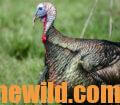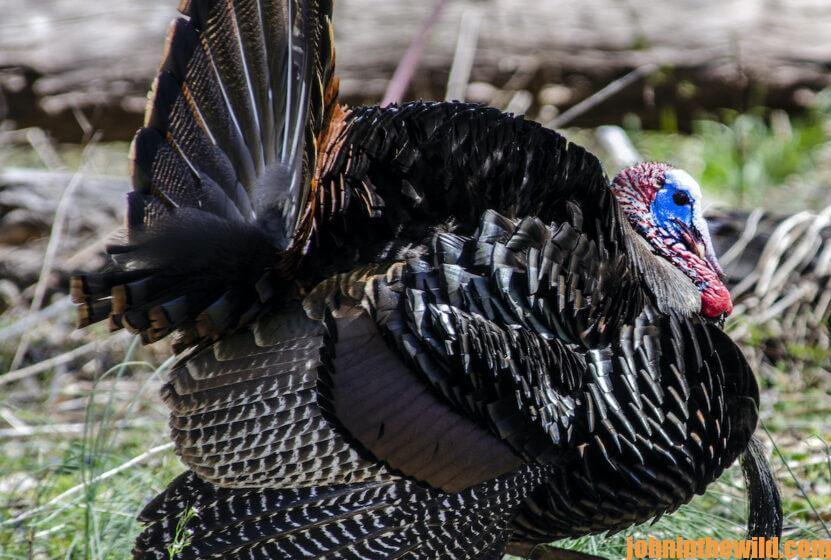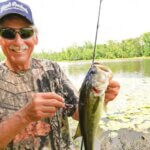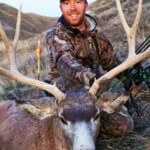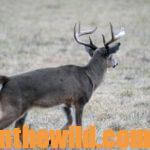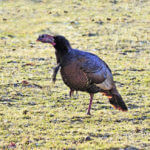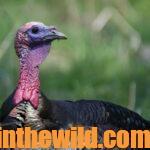Editor’s Note: Each year John E. Phillips hunts with some of the nation’s top turkey hunters and learns all he can about their calling and hunting strategies. This week we’ll talk with a couple of master turkey takers to learn more about how they hunt. Harold Knight, one of the founders of Knight and Hale Game Calls in Cadiz, Kentucky, now a subsidiary of EBSCO, has taken a world-record turkey before and has won many calling contests across the nation. He’s well known from speaking at hunting seminars and outdoor shows. Today Knight will tell us what’s required to be a master turkey hunter.
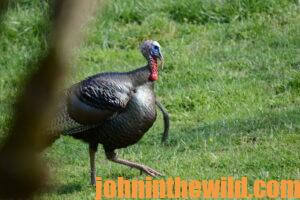 One time when turkey hunting in Kentucky with David Hale, he told me after we’d failed to take a bird on our morning hunt, “We’ve gotta cover ground and find a bird that’s lonesome in the middle of the morning. We’ll run these hills until we locate a turkey that will talk.”
One time when turkey hunting in Kentucky with David Hale, he told me after we’d failed to take a bird on our morning hunt, “We’ve gotta cover ground and find a bird that’s lonesome in the middle of the morning. We’ll run these hills until we locate a turkey that will talk.”
From about 7:30 am until we finally heard a tom gobble at 10:00 am, we traveled from mountaintop to mountaintop at the quick step in the mountainous area around Hale’s house, a rate of speed somewhere between fast walking and running. Every 150 yards Hale would say, “Wait a minute, John. Let’s check this hollow.” Hale would cut and cackle on his diaphragm call. As I tried to suck in enough air to relieve the tightness I felt in my lungs, I’d hear Hale say, “John, slow down your breathing, so I can hear better.” For most of the morning, I thought this exercise was an effort in futility.
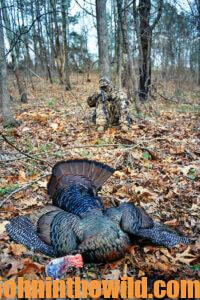
But at 10:15 am, a turkey gobbled as clearly and distinctly as I’d ever heard a bird talk. Hale immediately announced, “There he is. I knew if we covered enough ground and called long enough, sooner or later we’d locate a hot bird. I believe that tom will come down that old logging road on the side of the hill. Let’s drop off the side of this ridge, and set-up beside that logging road.”
Following Hale’s directions, we went toward the turkey. I’d barely gotten comfortable sitting beside a big pine tree when Hale whispered, “He’s coming.” When I whispered back that I couldn’t see the tom, Hale told me the bird had gone down into a little dip in the road. “John, although you can’t see him now, he’ll pop-up in just a minute. Get comfortable, put your gun on your knee, and ready yourself to take the shot. Once that gobbler comes up out of that dip in the road, he’ll be about 50 yards from you. Just let him keep coming, until he reaches that pine stump on the left-hand side of the road. He’ll be about 30 yards from you there, and then you can take the shot.”
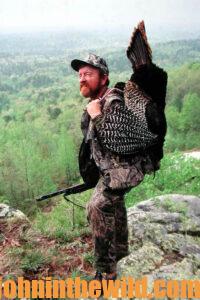
In less than five minutes, I knew I should have my turkey, and Hale and I would head out of the woods back to camp. I knew Hale had set us up in a good place, and that the bird would present a clean and easy shot, if he walked beside the stump on the side of the road. Just as Hale predicted, the tom came out of the dip, and I spotted his white, cotton-colored head moving up the road. Then I saw his big bronze body waddling from side to side, and his ropelike beard swinging with the rhythm of his stride. I breathed deeply and quickly with excitement because of the large size of this bird that easily weighed 20 pounds or more. I realized that bagging this tom would give me bragging rights.
The bird kept walking until he reached the stump. As the turkey continued moving about 5 yards past the stump, Hale clucked on his diaphragm call. The bird’s head went straight-up like a periscope. Hale told me to, “Take him.” I squeezed the trigger and created a memory for life – but not the one you would think, or the one I’d hoped to get. As I watched, the big bird jumped straight up in the air and flew away. I wished I’d had an excuse to offer when Hale asked, “What happened? Why did you miss? The bird was standing still in the middle of the road with his head up and waiting to die.”
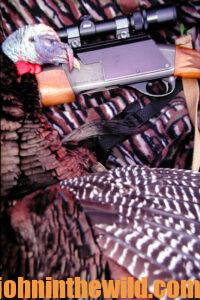 Although my brain went into high gear, replaying the shot as quickly as possible, I could find absolutely no reason for my miss. I finally just looked at Hale like a whipped puppy and explained that, “I don’t know what happened. I just missed.” Now, missing while hunting alone doesn’t involve nearly the shame that comes with missing while hunting with one of the legends of turkey hunting like David Hale. However, I learned then about the Brotherhood of Misses in the Fraternity of Gobbler Chasers as Hale grinned and said, “Aw, don’t worry about it, John. I miss turkeys too. Although I haven’t missed one as open as that one was, I still miss them. That gobbler just whipped us. However, we’ll get another one either today or tomorrow. Let’s go hunt some more. Besides, if you’d killed that turkey, we’d have to quit hunting. Now we can keep on hunting and maybe find another bird.”
Although my brain went into high gear, replaying the shot as quickly as possible, I could find absolutely no reason for my miss. I finally just looked at Hale like a whipped puppy and explained that, “I don’t know what happened. I just missed.” Now, missing while hunting alone doesn’t involve nearly the shame that comes with missing while hunting with one of the legends of turkey hunting like David Hale. However, I learned then about the Brotherhood of Misses in the Fraternity of Gobbler Chasers as Hale grinned and said, “Aw, don’t worry about it, John. I miss turkeys too. Although I haven’t missed one as open as that one was, I still miss them. That gobbler just whipped us. However, we’ll get another one either today or tomorrow. Let’s go hunt some more. Besides, if you’d killed that turkey, we’d have to quit hunting. Now we can keep on hunting and maybe find another bird.”
The next day we did locate another gobbler, and I redeemed myself. However, I’ll never forget that big mid-morning bird standing in the middle of the road on the first day I ever hunted with David Hale. I learned so much that day about turkey hunting in the middle of the morning and about persevering and staying after gobblers until you finally made one talk.
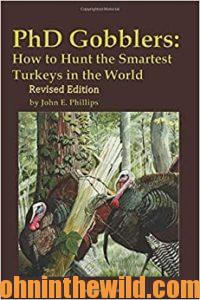 To learn more about hunting turkeys successfully, visit John E. Phillips’ Amazon book page at https://www.amazon.com/John-E.-Phillips/e/B001HP7K6O. For even more information from many of the top turkey hunters and callers, go to the book, “PhD Gobblers: How to Hunt the Smartest Turkeys in the World” at https://www.amazon.com/gp/product/B083V83RLG/ref=dbs_a_def_rwt_hsch_vapi_taft_p4_i11
To learn more about hunting turkeys successfully, visit John E. Phillips’ Amazon book page at https://www.amazon.com/John-E.-Phillips/e/B001HP7K6O. For even more information from many of the top turkey hunters and callers, go to the book, “PhD Gobblers: How to Hunt the Smartest Turkeys in the World” at https://www.amazon.com/gp/product/B083V83RLG/ref=dbs_a_def_rwt_hsch_vapi_taft_p4_i11
and available in Kindle, print and Audible. You may have to copy and paste this link into your browser. (When you click on the book, notice on the left where Amazon says you can read and hear 10% of the book for free). On the right side of the page and below the offer for a free Audible trial, you can click on Buy the Audible book.
Tomorrow: Tactics for Hunting Mid-Morning Turkeys


